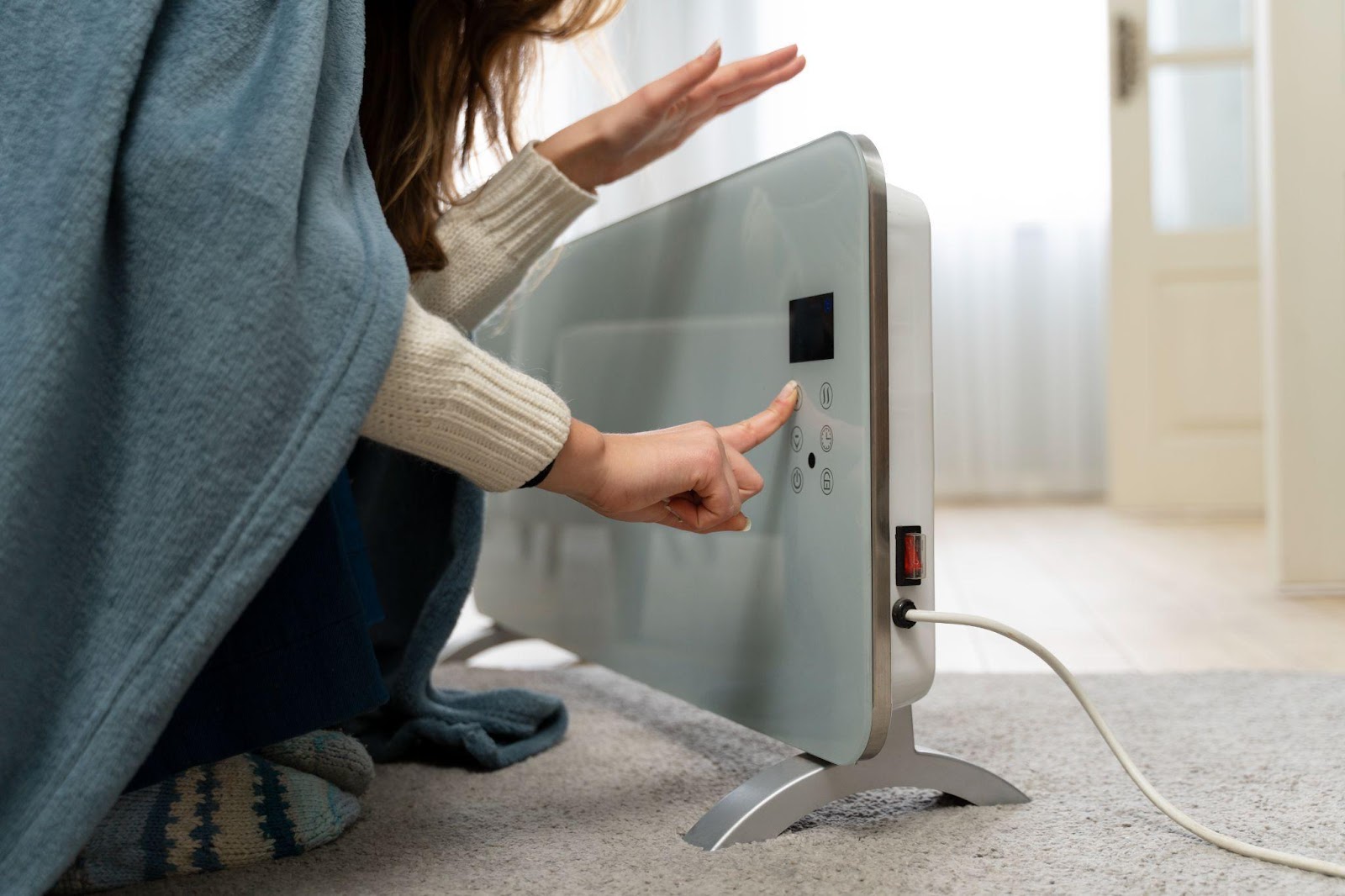
Every year, more than 400 Americans die from unintentional carbon monoxide poisoning, while an additional 4,000 require hospitalization for CO exposure.
This silent killer earns its deadly reputation by being completely colorless, odorless, and tasteless, making detection impossible without proper equipment.
Alabama residents face particular risks during winter months when heating systems work overtime and ventilation decreases, creating the perfect conditions for carbon monoxide accumulation in homes and businesses.
Understanding Carbon Monoxide Dangers
Carbon monoxide poses serious health threats because it interferes with the body’s ability to transport oxygen through the bloodstream. When CO enters the lungs, it binds to hemoglobin more readily than oxygen, creating carboxyhemoglobin that cannot carry oxygen to vital organs.
Low-level exposure can cause headaches, dizziness, weakness, and nausea, which many people mistakenly attribute to flu symptoms.
Higher concentrations lead to confusion, chest pain, and loss of consciousness.
Prolonged exposure or high-concentration incidents can result in permanent brain damage, heart problems, or death.
Understanding these dangers helps families recognize the importance of implementing comprehensive protection strategies throughout their homes and workplaces.
Primary Carbon Monoxide Detection Methods
The most effective defense against carbon monoxide poisoning involves installing proper detection equipment throughout residential and commercial properties. Modern carbon monoxide detectors use sophisticated sensors to identify dangerous CO levels before they reach life-threatening concentrations.
Battery-powered detectors offer reliable protection during power outages, while hardwired models with battery backup provide continuous monitoring.
Smart detectors connect to home automation systems and send alerts to smartphones when dangerous levels are detected. Professional monitoring services can dispatch emergency responders automatically when alarms activate.
Proper detector placement on every level of a building, especially near sleeping areas and fuel-burning appliances, maximizes the effectiveness of protection for all occupants.
Appliance Maintenance and Safety Protocols
Regular maintenance of fuel-burning appliances represents another fundamental precaution against carbon monoxide accumulation. Professional inspection and servicing ensure these devices operate safely and efficiently throughout their service lives.
Key maintenance protocols include several important safety measures that property owners should implement consistently:
- Annual professional inspection of furnaces, water heaters, and other gas appliances by certified technicians.
- Regular cleaning and inspection of chimneys, flues, and venting systems to prevent blockages from debris or animal nests.
- Prompt repair of any appliance showing signs of malfunction, unusual odors, or visible corrosion around connections.
- Professional installation of all new gas appliances according to manufacturer specifications and local building codes.
- Routine replacement of furnace filters to maintain proper airflow and combustion efficiency.
These maintenance practices significantly reduce the likelihood of carbon monoxide production while extending appliance lifespan and improving energy efficiency for homeowners and businesses.

Ventilation and Air Quality Management
Proper ventilation serves as a critical barrier against carbon monoxide accumulation by ensuring adequate airflow throughout indoor spaces. Effective ventilation systems remove contaminated air while introducing clean outdoor air to dilute any CO that might be present.
Natural ventilation through windows and doors provides basic air exchange, while mechanical ventilation systems offer more controlled management of air quality. Exhaust fans in kitchens and bathrooms help remove combustion byproducts from cooking and heating activities. Whole-house ventilation systems can maintain consistent air quality regardless of weather conditions.
Regular inspection and cleaning of ventilation components ensure optimal performance and prevent blockages that could trap hazardous gases indoors.
Emergency Response and Safety Procedures
Knowing how to respond to carbon monoxide emergencies can save lives when detection systems activate or symptoms appear. Quick action and proper emergency procedures minimize exposure time and prevent serious health consequences.
Emergency response begins with the immediate evacuation of all occupants from the affected area to fresh outdoor air. Calling emergency services provides professional medical evaluation and identification of the source by trained responders.
Never re-entering the building until emergency personnel determine it safe prevents additional exposure to dangerous CO levels. Seeking medical attention for anyone experiencing symptoms ensures proper treatment and monitoring for delayed health effects.
Having a family emergency plan that includes scenarios involving carbon monoxide helps ensure everyone knows how to respond effectively during high-stress situations.

Legal Responsibilities and Liability Issues
Property owners in Alabama face specific legal obligations regarding carbon monoxide protection, particularly in rental properties and commercial buildings.
Understanding these responsibilities helps prevent liability issues while protecting occupants from dangerous exposure, similar to how property owners have premises liability responsibilities for maintaining safe conditions.
Alabama law requires carbon monoxide detectors in certain residential properties, with specific requirements varying by municipality and property type. Landlords must provide functioning CO detectors in rental units containing fuel-burning appliances or attached garages.
Commercial property owners must comply with building codes that address ventilation and CO detection in workplaces. Failure to meet these legal requirements can result in liability for injuries or deaths caused by carbon monoxide poisoning, making compliance both a legal necessity and a moral imperative.
Victims of CO poisoning may need to understand how to make a personal injury claim when property owner negligence contributes to their exposure.
Frequently Asked Questions About Carbon Monoxide Poisoning
Common questions about carbon monoxide precautions help clarify the most effective protection strategies and address concerns that Alabama residents frequently encounter when implementing safety measures.
What Is the Most Important Precaution Against Carbon Monoxide Poisoning?
Installing working carbon monoxide detectors on every level of your home provides the most reliable protection against CO poisoning. These devices offer early warning before dangerous concentrations develop, allowing time for safe evacuation and emergency response.
How Often Should Carbon Monoxide Detectors Be Tested?
Test carbon monoxide detectors monthly by pressing the test button to ensure proper function. Replace batteries annually or when low-battery warnings sound. Replace the entire detector every 5-7 years according to manufacturer recommendations for optimal performance.
Where Should Carbon Monoxide Detectors Be Placed in a Home?
Install CO detectors on every level of your home, including basements and near sleeping areas. Place detectors at least 15 feet away from fuel-burning appliances to prevent false alarms while ensuring adequate coverage throughout living spaces.
What Appliances Produce Carbon Monoxide?
Gas furnaces, water heaters, stoves, fireplaces, portable generators, and vehicles can all produce carbon monoxide when operating improperly or in poorly ventilated areas. Any device that burns fuel has the potential to create dangerous CO levels.
How Can You Tell if Carbon Monoxide Is Present Without a Detector?
You cannot detect carbon monoxide without proper equipment since it has no smell, color, or taste. Physical symptoms like headaches, dizziness, or nausea in multiple household members may indicate CO exposure, but these symptoms can mimic other illnesses.
What Should You Do if Your Carbon Monoxide Detector Sounds?
Immediately evacuate all occupants to fresh outdoor air and call emergency services. Do not re-enter the building until emergency personnel determine it safe. Seek medical attention if anyone experiences symptoms of CO poisoning.
Professional Safety Inspections and Assessments
Professional safety inspections provide a comprehensive evaluation of carbon monoxide risks throughout residential and commercial properties.
Qualified technicians use specialized equipment to detect CO sources and assess overall safety systems, similar to how workplace safety inspections help prevent industrial accidents.
These inspections typically include testing of all fuel-burning appliances, evaluation of ventilation systems, and assessment of detector placement and function.
Professional recommendations help property owners prioritize safety improvements and address potential hazards before they become dangerous.
Regular professional inspections complement homeowner maintenance efforts and provide expert verification of safety system effectiveness.
Documentation from professional inspections can also support insurance claims and legal compliance requirements for property owners.
Protect Your Family from Carbon Monoxide Dangers
Understanding which precautions work best against carbon monoxide poisoning represents just the beginning of comprehensive home safety planning. The invisible nature of this deadly gas requires vigilant attention to detection systems, maintenance protocols, and emergency preparedness that can mean the difference between life and death.
At Baxley Maniscalco, our experienced attorneys understand the legal complexities surrounding carbon monoxide incidents and can provide guidance when safety failures result in injury or property damage.
From insurance disputes to liability claims, we offer the expertise necessary to navigate the legal challenges that can arise from CO-related incidents, including understanding the criteria for personal injury claims in Alabama.
Don’t wait until tragedy strikes to address carbon monoxide safety concerns.
Contact Baxley Maniscalco today to schedule a confidential consultation. Learn how our legal expertise can protect your interests when carbon monoxide incidents lead to insurance claims, liability issues, or regulatory compliance matters.
Can't find what you're looking for? Search our site below.










